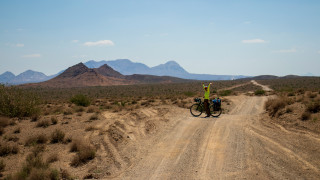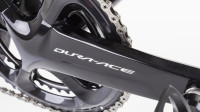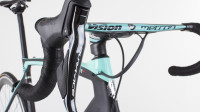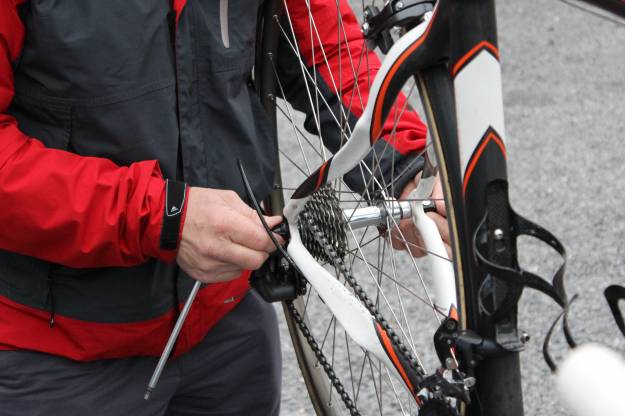Travelling with your bike opens up incredible opportunities to explore new routes and destinations, but without proper preparation, it can also bring unexpected hassles.
Whatever bike you are flying with, these ten essential tips will help make flying with your bike a stress-free experience.
1. Check your airline’s policy in advance
Airlines vary widely in how they handle bikes. Some include them as part of your luggage allowance, while others charge extra or impose strict dimensions and weight limits. Check your airline's policy on deflating tyres and CO₂ canisters in checked luggage. If you are travelling with an adaptive bike or mobility aid, check for any specific airline policies regarding their transport. Call ahead to confirm details, and if possible, get written confirmation.
2. Book your bike on the flight
Once you've checked the airline's policy, book your bike onto the flight in advance. Some airlines require this as a separate booking, and bike space may be limited. If you need assistance at the airport due to mobility concerns, arrange support services in advance.
3. Check your insurance coverage
Many standard travel insurance policies offer minimal coverage for bike damage in transit. Review your policy and consider specialised bike insurance for peace of mind. If you are travelling with an adaptive bike, check that it is fully covered under your policy.
4. Gather printed proof of airline policies
Even if you've followed the airline’s guidelines, carry a printed copy of their policy with key sections highlighted. Also, bring receipts confirming you've booked your bike onto the flight. Having the bike box dimensions noted down will also help at check-in. If travelling with mobility aids or adaptive equipment, bring documentation confirming their status to avoid issues at check-in.
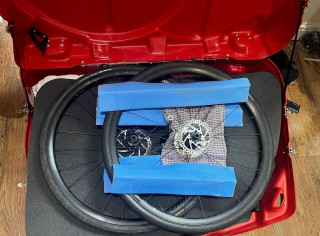
5. Pack your bike securely
You have several options when packing your bike for air travel, including cardboard boxes, bike bags, and hard cases. Each has its advantages: cardboard boxes are lightweight and often free from bike shops, and bike bags offer flexibility and some protection. At the same time, hard cases provide the best security against rough handling and pressure changes. However, bulkier and heavier, hard cases are crush-resistant and designed specifically for air travel. If purchasing one isn’t feasible, consider renting from specialist companies. Riders with adaptive cycles should ensure all detachable parts are properly secured to prevent damage.
Before sealing your bike box or bag, take a photo of how it’s packed. This can serve as a reference when repacking and provide proof of condition in case of any damage claims. Consider how you will secure your bike’s container - cardboard boxes require plenty of strong tape, bike bags can be locked and reinforced with cable ties, and hard cases usually have built-in locks but can also benefit from additional cable ties for extra security.
6. Remove vulnerable components if necessary
To prevent damage in transit, remove the rear derailleur (mech) and wrap it securely in bubble wrap, a towel, or even a pillowcase before securing it between the chainstays. This adds an extra layer of protection against impacts.For bikes with disc brakes, consider removing the rotors to prevent bending. If you take them off, ensure you have access to a torque wrench to reinstall them correctly.
Riders with adaptive cycles featuring specialised components should consult a specialist mechanic before disassembly to avoid complications upon reassembly. Not sure what to do with your saddle? Some riders choose to lower it, while others remove it entirely to create more packing space.
7. Prepare your wheels and tyres
Before your trip, check your airline’s specific policy on tyre deflation. Some require full deflation, while others allow partial deflation to protect the rims. If you're using tubeless tyres, leave enough pressure to prevent the tyre from unseating and leaking sealant.
8. Add extra padding and support
Adding extra padding is essential to prevent damage regardless of how your bike is packed. Materials such as foam pipe lagging, bubble wrap, towels, or old bedsheets can help cushion your bike’s frame and components during transit. Pay special attention to delicate areas - cover disc brakes with a towel or old clothes to prevent them from catching on the frame.
For added security, insert plastic spacers, foam, or even sturdy cardboard into your brake pads to prevent them from closing up during transit. Riders with adaptive bikes should also carefully mark and secure any removable parts to assist with smooth reassembly upon arrival.
9. Carry essentials in your hand luggage
Luggage delays can happen, so pack cycling essentials in your carry-on. Bring your cycling shoes, pedals (stashed inside the shoes), and at least one set of cycling clothing. If your bike is delayed, you can still rent a replacement and ride. If you use any adaptive cycling equipment such as prosthetics, spare straps, or custom handlebars, consider packing these in your hand luggage to avoid complications if your main luggage is delayed.
10. Arrive early for check-in
Check-in staff may not be familiar with bike policies, and oversized luggage areas are often a short walk away. Arrive early to allow time for any disputes and ensure your bike is processed correctly. If you need assistance with mobility or help handling an adaptive cycle, notify the airline in advance and arrive with extra time to accommodate any additional steps.
This guide provides a general overview of flying with your bike, but always check your airline’s policies and any regulations specific to your destination before you travel.

